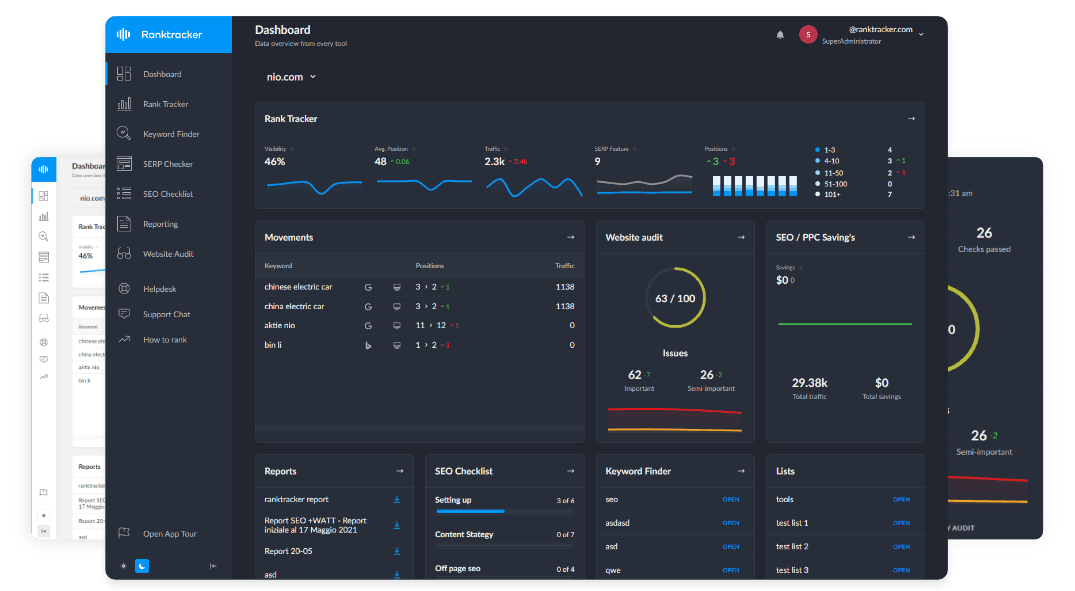Intro
Almost every home-buying journey now begins not with a handshake, but with a search bar. From browsing dreamy neighborhoods to hunting down that elusive two-bedroom with a yard and parking, buyers and sellers alike are living online. According to the National Association of Realtors, a staggering 97% of buyers used the internet in their home search. If you're not showing up in those searches, you're not just missing out, you may as well not exist.
In real estate, visibility is currency. SEO is the engine behind that visibility. It brings in organic traffic, nurtures leads without draining your ad budget, builds your reputation, and positions you as the local expert people actually trust, not just the one with the biggest billboard.
How Real Estate Search Actually Works
Before tackling strategy, it helps to know how buyers think and how Google interprets their clicks.
1. Local First, Always
Real estate is hyperlocal. People search for “homes for sale in Wicker Park,” or “best property management in my area.” Your SEO must speak that language, down to zip codes, street names, and neighborhood slang.
2. Search is Visual
Photos aren’t window dressing, they’re the window. Listings live and die by image quality. Video tours? Increasingly non-negotiable. Google knows this and favors visually rich content.
3. Trust Is a Ranking Factor
Google’s E-E-A-T (Experience, Expertise, Authoritativeness, Trustworthiness) guidelines loom large, especially in real estate. Buying a home is high-stakes. Your content has to reflect substance, not fluff.
4. The Long Game
Buying a home isn’t an impulse buy. SEO must support every phase of the journey, from daydreaming to decision-making.
5. Mobile Rules
Most people house hunt between errands or on the couch. If your site isn't mobile-friendly, you're quietly turning away most of your audience.
Pillar 1: Lay the Foundation – Technical SEO
Imagine your site as a home. Technical SEO is the foundation and plumbing. You don’t notice it when it’s done right, but when it’s bad, everything crumbles.
Speed & Performance
-
Compress and modernize images (WebP is your friend).
-
Enable lazy loading so images wait their turn.
-
Trim the fat by minifying CSS and JavaScript.
-
Choose a hosting provider that doesn’t nap during peak hours.
-
Monitor Core Web Vitals to keep Google happy and users unannoyed.
Mobile Usability
-
Responsive layout is non-negotiable.
-
Tap-friendly buttons are a must.
-
Fast mobile load times are even more critical than desktop.
Crawlability & Indexing
-
Submit a dynamic XML sitemap that updates with new listings.
-
Use robots.txt wisely so you don’t lock Google out.
-
Employ canonical tags to avoid duplicate content penalties.
-
Fix broken links regularly.
Structured Data
Add schema markup so search engines understand what your listings are, not just what they say.
-
Use RealEstateAgent, LocalBusiness, and Offer schemas.
-
Highlight reviews and ratings.
-
Add breadcrumb schemas for navigation clarity.
HTTPS Is Standard
If your site’s not secure, it’s not credible. And Google will let everyone know.
Pillar 2: Keyword Research That Reflects the Real World
Real estate searches aren’t broad, they’re granular. "Homes for sale" is too generic. Think like a buyer.
What Real People Search For
-
Geographic queries: “condos for rent in Capitol Hill”
-
Property types: “luxury homes with views in Malibu”
-
Lifestyle needs: “pet-friendly apartments near city park”
-
Intent signals: “best realtor for downsizing in Portland”
Use Tools That Speak SEO
-
Google Keyword Planner
-
Google Autocomplete
-
“People Also Ask”
-
Ahrefs, SEMrush, or SpyFu
-
Google Search Console
Map Your Keywords Strategically
-
Homepage → city-level terms
-
Neighborhood pages → local long-tails
-
Listing pages → specific addresses and features
-
Blog posts → educational and trend-based queries
Pillar 3: On-Page SEO – Where Design Meets Relevance
This is where content does the heavy lifting.
Titles & Descriptions
Write title tags like a headline editor, not a robot. Keep it under 60 characters, include your keyword, and make it click-worthy.
Example:
Homes for Sale in Queen Anne – Dwell Real Estate
Meta descriptions should tease the value. Keep them under 160 characters and write for humans.
Headers Matter
Use H1 for the page title, then H2–H6 for structure. Make headers helpful, not robotic.
Content That Stands Out
Avoid templated descriptions. For listings:
-
Highlight lifestyle benefits, not just specs.
-
Describe the vibe of the neighborhood.
-
Mention proximity to schools, parks, transit.
For guides:
-
Think “Living in Beacon Hill: A Local’s Perspective”
-
Offer actual insights. Don't pad with filler.
Images & Videos
-
Professional photography isn’t optional.
-
Use descriptive filenames and alt text.
-
Include video walkthroughs and transcriptions for accessibility.
Internal Linking
Link logically. From blogs to listings, from guides to agent bios. It helps both users and crawlers.
Pillar 4: Local SEO – Your Competitive Advantage
Local SEO is where real estate professionals win or vanish.
Google Business Profile
This is your storefront. Fill out everything. Add high-quality photos. Post updates. Answer questions.
Be N.A.P. Consistent
Your Name, Address, and Phone Number should match exactly across your site, directories, and profiles.
List Yourself Smartly
Zillow, Realtor.com, Yelp, local chamber directories. Be where people are looking before they get to Google.
Reviews = Local Trust
-
Ask for them often.
-
Respond to them always.
-
Highlight the best ones prominently.
Pillar 5: Off-Page SEO & Link Building
Think of backlinks as digital word-of-mouth.
Smart Ways to Earn Links
-
Partner with local businesses and blogs.
-
Feature neighborhood coffee shops in your guides, they might return the favor.
-
Offer guest posts or insights to news outlets.
-
Create link-worthy assets like interactive maps or market reports.
Pillar 6: Content Strategy – Beyond Listings
Your blog isn’t just a blog. It’s your knowledge bank, trust builder, and lead magnet.
What to Create
-
Neighborhood spotlights
-
Agent stories
-
Market trend breakdowns
-
Buyer checklists
-
“Rent vs Buy” decision guides
-
Local lifestyle content such as pet-friendly parks, walkability, school rankings
Use a variety of formats: blog posts, video explainers, podcasts, infographics, interactive tools.
Pillar 7: UX & Conversion
Good SEO brings people in. Great UX keeps them there.
-
Navigation should be intuitive with no dead ends.
-
Search filters must work well and let people sort by what they care about.
-
CTAs should be specific. “Book a showing” beats “Contact us.”
-
Accessibility isn’t optional. It’s table stakes.
Pillar 8: Level Up with Advanced Tactics
Feeling ambitious?
-
Voice Search Optimization: Think in questions and speakable phrases.
-
AI Personalization: Show listings based on behavior.
-
Google Discover & News: If you publish timely, expert content, aim for inclusion.
-
Programmatic SEO: Build scalable landing pages for each micro-location.
-
Competitor Audits: Spy ethically using Ahrefs or SEMrush.
Pillar 9: Measure What Matters
SEO is data-driven. Your strategy should be, too.
-
Use Google Analytics, Search Console, and SEO tools for insight.
-
Track:
-
Organic traffic
-
Keyword rankings
-
Click-through rates
-
Lead conversions
-
Bounce rates
-
Mobile usability
-
-
Refresh underperforming pages.
-
Update old content regularly.
-
Test new formats, CTAs, layouts.
In a crowded market, great SEO is more than a lead generator, it’s your digital handshake. It puts your expertise in front of the right people, at the right time, without shouting. Implement it well, and you don’t just earn clicks, you earn trust.
You’re not just selling homes. You’re building authority, one search at a time.

